Predicting risk of peripherally inserted central catheter related thrombosis

Our findings might help clinicians predict thrombosis risk in individual patients, select proper therapeutic strategies and optimize the timing of anticoagulation therapy” Has et al (2017). Abstract: The use of peripherally inserted central catheters (PICCs) is increasing rapidly worldwide. A number of patient-related, clinical-related and device-related characteristics might be risk factors for PICC-related thrombosis. We […]
FDA regulatory perspectives for studies on hemodialysis vascular access
This particular Kidney Health Initiative project focused on products related to hemodialysis vascular access, with the goal of clarifying appropriate trial end points that could subsequently inform clinical, regulatory, and coverage decisions” Hurst et al (2017). Abstract: In an effort to foster innovation and new product development, the American Society of Nephrology and the US […]
Impact of subcutaneous trastuzumab in the community

Trastuzumab has become standard of care in the treatment of early and metastatic HER2-positive breast cancer. Initially trastuzumab could only be administered intravenously (IV), however since a few years there is also a subcutaneous (SC) formulation” Tjalma et al (2017). Abstract: Trastuzumab has become standard of care in the treatment of early and metastatic HER2-positive […]
A case of neonatal PICC line knot formation

A peripherally inserted central Nutriline catheter (24G PICC) was placed into the vena femoralis of a preterm baby. Radiography demonstrated looping and a possible knot formation of the catheter…” Keulemans et al (2017). Extract: “A peripherally inserted central Nutriline catheter (24G PICC) was placed into the vena femoralis of a preterm baby. Radiography demonstrated looping […]
Effectiveness of StatLock securement for peripherally inserted central catheters
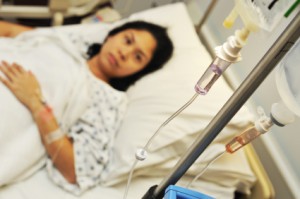
In this systematic review and meta-analysis, we evaluated the effectiveness, safety and comfort of StatLock for the securement of peripherally-inserted central catheters” Luo et al (2017). Abstract: In this systematic review and meta-analysis, we evaluated the effectiveness, safety and comfort of StatLock for the securement of peripherally-inserted central catheters. PubMed, EMBASE, Cochrane Library, China National […]
Single-stick tunneled central venous access technique for neonates

Describe and assess the safety and efficacy of tunneled jugular central venous catheter placement performed under ultrasound (US) and fluoroscopic guidance in neonates and infants weighing <5 kg using the single-stick technique at three tertiary pediatric hospitals” Lindquester et al (2017). Abstract: BACKGROUND: Despite the demonstrated feasibility of the single-stick technique in the femoral vein, […]
Panel of experts define reasons for central venous catheter removal

We convened a multidisciplinary panel of experts to propose standardized definitions of catheter end points to guide the design of future clinical trials seeking approval from the Food and Drug Administration” Allon et al (2017). Abstract: Central venous catheters are used frequently in patients on hemodialysis as a bridge to a permanent vascular access. They […]
Lancisi’s sign and central venous catheter tip position
The inappropriate placement of a 25-cm temporary CVC in the right internal jugular vein worsened the tricuspid valve regurgitation, which became evident by the Lancisi’s sign” Vigo et al (2017). Abstract: INTRODUCTION: Valvular disease and pulmonary hypertension are common conditions in haemodialysis patients. In presence of tricuspid regurgitation, an increased retrograde blood flow into the […]
Sarcoidosis lesions located at venipuncture sites
Our objective was to describe 3 patients who developed specific lesions of sarcoidosis in areas of venipuncture and to discuss their possible pathogenesis” Marcoval et al (2017). Abstract: It has been suggested that the predilection of sarcoidosis to affect scars is due to the presence of antigens or foreign bodies that can serve as a […]
Systematic review of extravasation injury management in neonates

Primary objective To compare the efficacy and safety of saline irrigation or saline irrigation with prior hyaluronidase infiltration versus no intervention or normal wound care for tissue healing in neonates with extravasation injury” Gopalakrishnan et al (2017). Abstract: BACKGROUND: Extravasation injury, a complication commonly seen in the neonatal intensive care unit, can result in scarring […]
Are picture books effective to reduce distress associated with venipuncture?
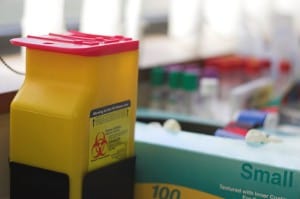
We recommend the picture book be routinely read and used during venipunctures to decrease procedural distress in preschool-aged children” Tsao et al (2017). Abstract: AIM: Distress associated with needle-related procedures is a major concern in preschool-aged children nursing. This study developed a medical picture book for supporting preschool-aged children facing a venipuncture and determined the […]
ECG guided peripherally inserted central catheter tip placement among neonates

To explore the clinical application of the intracavitary electrocardiogram (IC-ECG) guided Peripherally Inserted Central Catheter (PICC) tip placement among neonates” Zhou et al (2017). Abstract: OBJECTIVE: To explore the clinical application of the intracavitary electrocardiogram (IC-ECG) guided Peripherally Inserted Central Catheter (PICC) tip placement among neonates. BACKGROUND: the ECGs of neonates are difficult to perform […]
National Healthcare Safety Network surveillance CLABSI definition changes

Increased ICU primary CLABSI rates were found to be a result of both surveillance definition changes and infection control practices” Corley et al (2017). Calendar year 2015 intensive care unit (ICU) central line–associated bloodstream infections (CLABSIs) from 1 hospital were reviewed using 2014 CLABSI surveillance definitions to assess the relative impact of definition changes and […]
Review of a decade of reported parenteral nutrition errors
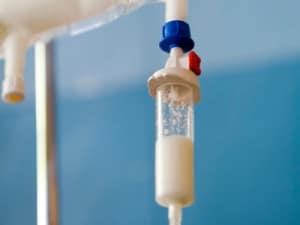
This document reviews error reports from the Institute for Safe Medication Practices’ Medication Errors Reporting Program that are associated with the PN use process over the past 10 years” Guenter et al (2017). Abstract Parenteral nutrition (PN) is a complex, high-alert medication, and errors associated with the use of this therapy may lead to significant […]
Indications and safe management of parenteral nutrition administration

The aim of this article is to provide an overview of what parenteral nutrition (PN) is and when its use is required” Wyer (2017). Abstract: The aim of this article is to provide an overview of what parenteral nutrition (PN) is and when its use is required. It will describe the process of nutritional assessment, […]
What is the prevalence of home parenteral nutrition in the United States

Due to these benefits, the prevalence of home parenteral and enteral nutrition (HPEN) continues to increase worldwide” Mundi et al (2017). Abstract: BACKGROUND: Malnutrition is highly prevalent and associated with increased morbidity and mortality. Studies continue to reveal significant clinical benefits with nutrition support, including improved wound healing, reduction in complications and length of stay, […]
Supporting children receiving parenteral nutrition at school
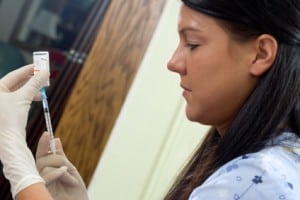
Care is individualized to the specific child and may include provision of nutrition support therapy while in the school setting, maintenance of a nutrition access device, and monitoring to safely prevent or act on signs of potential complications” Corrigan et al (2017). Abstract: The use of nutrition support outside of institutional settings has contributed to […]
Labelling and filtration requirements for lipid injectable emulsion

The American Society for Parenteral and Enteral Nutrition PN Safety Committee surveyed clinicians on how ILE products are prescribed, prepared, and administered to patients from neonates to adults” Christensen et al (2017). Abstract: BACKGROUND: Lipid injectable emulsion (ILE) is an integral part of parenteral nutrition (PN), providing energy and essential fatty acids. With recent consensus […]
Improving peripheral intravenous cannulation success rate in children

We assessed using a prospective randomized controlled trial whether the application of heat gel pack increases the needle procedure success rate. The primary study outcome was procedural success rate at the first attempt” Schreiber et al (2017). Abstract OBJECTIVE: Needle-related procedures are the most common sources of pain for children in the hospital setting. The […]
What is the risk of vancomycin-associated nephrotoxicity?

To evaluate the correlation between incidence of nephrotoxicity associated with weight-based IV vancomycin dosing strategies in nonobese and obese patients” Choi et al (2017). Abstract: BACKGROUND: A consensus statement recommends initial intravenous (IV) vancomycin dosing of 15-20 mg/kg every 8- 24 hours, with an optional 25- to 30-mg/kg loading dose. Although some studies have shown […]
Implementation of chlorhexidine bathing in non-ICU settings
We are using a systems engineering approach to identify barriers and facilitators to implementation along with a step-wedge design to pilot CHG bathing in several VA medical centers in non-ICU settings” McKinley et al (2017). Background: Daily bathing with chlorhexidine gluconate (CHG) has been shown to reduce healthcare-associated infections (HAIs). Daily CHG bathing has been […]
Outline of the management of catheter-related thrombosis

In this narrative review, the epidemiology, diagnosis, prevention strategies, and management of catheter-related thrombosis are outlined” Baumann Kreuziger et al (2017). Abstract: In this narrative review, the epidemiology, diagnosis, prevention strategies, and management of catheter-related thrombosis are outlined. Central venous catheters have significantly improved the quality of life of patients requiring chemotherapy, parenteral nutrition, and […]
Using ultrasound to prevent a broken catheter from migrating to the heart
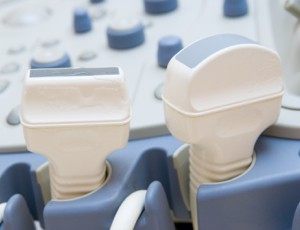
A peripheral IV catheter was removed in a 90 year old patient and only half of the catheter was retrieved. By using ultrasound examination the remaining part of the IV catheter was identified, and retrieved surgically, before it could migrate towards the heart” Schraverus et al (2017). Abstract: Peripheral intravenous (IV) catheters can break off […]
Evaluation of a multifaceted procedural skills lab for medical students
Medical students have limited confidence in performing procedural skills. A pilot study was conducted to evaluate the effect of a multifaceted Procedural Skills Lab (PSL) on the confidence of medical students to perform procedural skills” Katz et al (2017). Abstract: BACKGROUND: Medical students have limited confidence in performing procedural skills. A pilot study was conducted […]
Local anaesthesia or two-point acupressure to prevent venipuncture pain

The aim of the present study was to compare the effects of topical anesthesia and acupressure at the Yintang (Extra 1) and the Laogong (P-8) points on the severity of venipuncture pain among hospitalized 6-12-year-old children” Pour et al (2017). Abstract: The aim of the present study was to compare the effects of topical anesthesia […]
Phlebotomy excess contributes to anemia in PICU patients

Phlebotomy excess contributes to anemia in PICU patients and increases the likelihood of red blood cell transfusion, which is associated with risk of adverse outcomes. Excessive phlebotomy reduction (EPR) strategies may reduce the need for transfusion, but have not been evaluated in a PICU population” Steffen et al (2017). Abstract: BACKGROUND AND OBJECTIVES: Phlebotomy excess […]
Will cleansing the venipuncture site with alcohol jeopardize blood alcohol measurement results?
This study aimed to establish whether an alcoholic antiseptic, wiped or not before venipuncture, may jeopardize alcohol testing with a commercial enzymatic assay and a reference head-space gas chromatography (GC) technique” Lippi et al (2017). Abstract: INTRODUCTION: This study aimed to establish whether an alcoholic antiseptic, wiped or not before venipuncture, may jeopardize alcohol testing […]
Prevalence of needle stick injuries among medical students
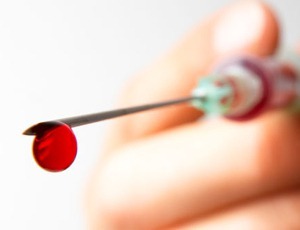
The objectives of this study were to determine the prevalence of needle stick injuries of the fourth and final year medical students, and to estimate their knowledge about blood-borne pathogens disease transmission and standard precautions” Marusic et al (2017). Abstract: INTRODUCTION: Medical students are mainly exposed to needle stick and sharp object injuries in the […]
Nationwide study on peripheral intravenous catheter associated–bloodstream infections

Our study shows that PVCs carry a significant risk for bacteremia in Spanish IMDs” Guembe et al (2017). Summary: Background: The use of peripheral venous catheters (PVCs) has increased outside the intensive care unit, as have rates of peripheral venous catheter associated-bloodstream infection (PVC-BSI). The internal medicine department (IMD) is one of the main wards […]
Will a change in blood culture media increase bacteraemia detection?

During an investigation of pediatric central line-associated bloodstream infections (CLABSI) at an academic medical center in early 2016, an increase was identified in the percent positivity of blood cultures collected from pediatric patients in the fall of 2015” Langstaff et al (2017). Background: During an investigation of pediatric central line-associated bloodstream infections (CLABSI) at an […]

